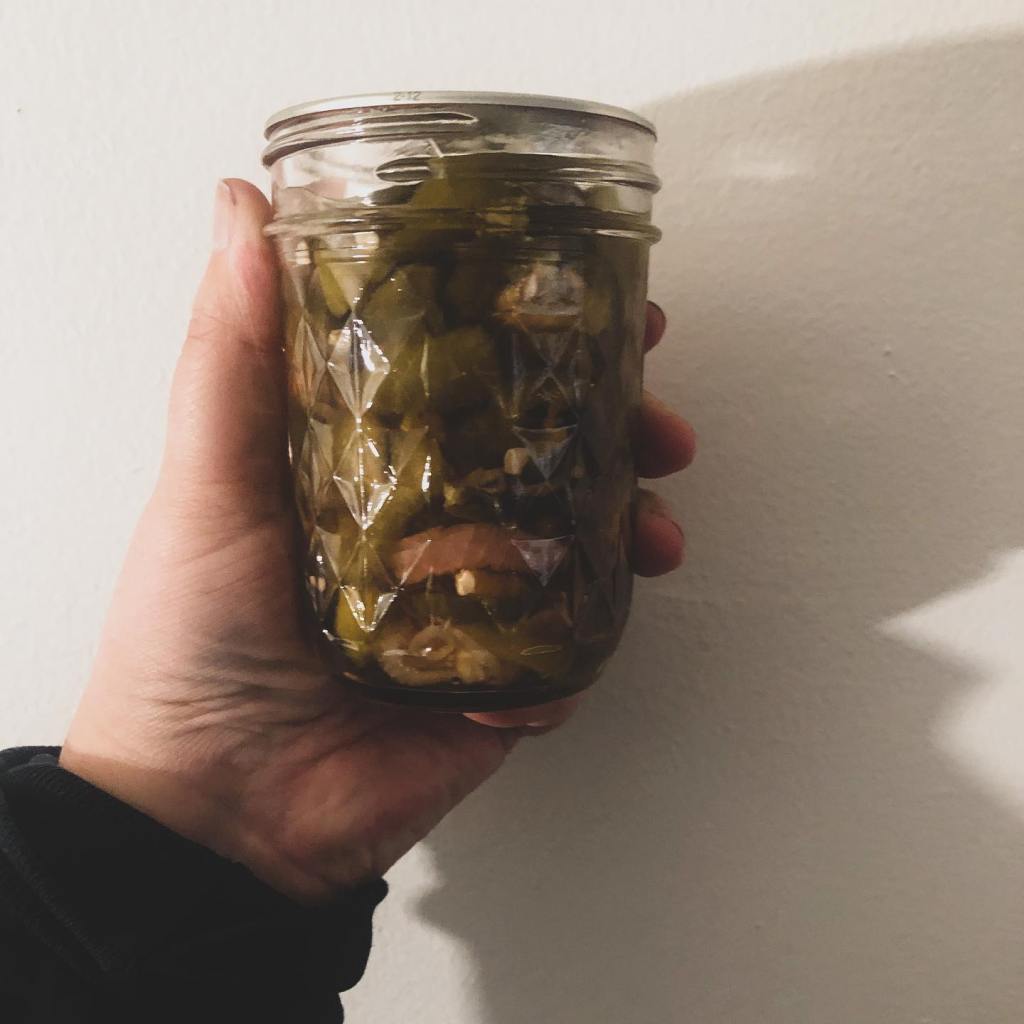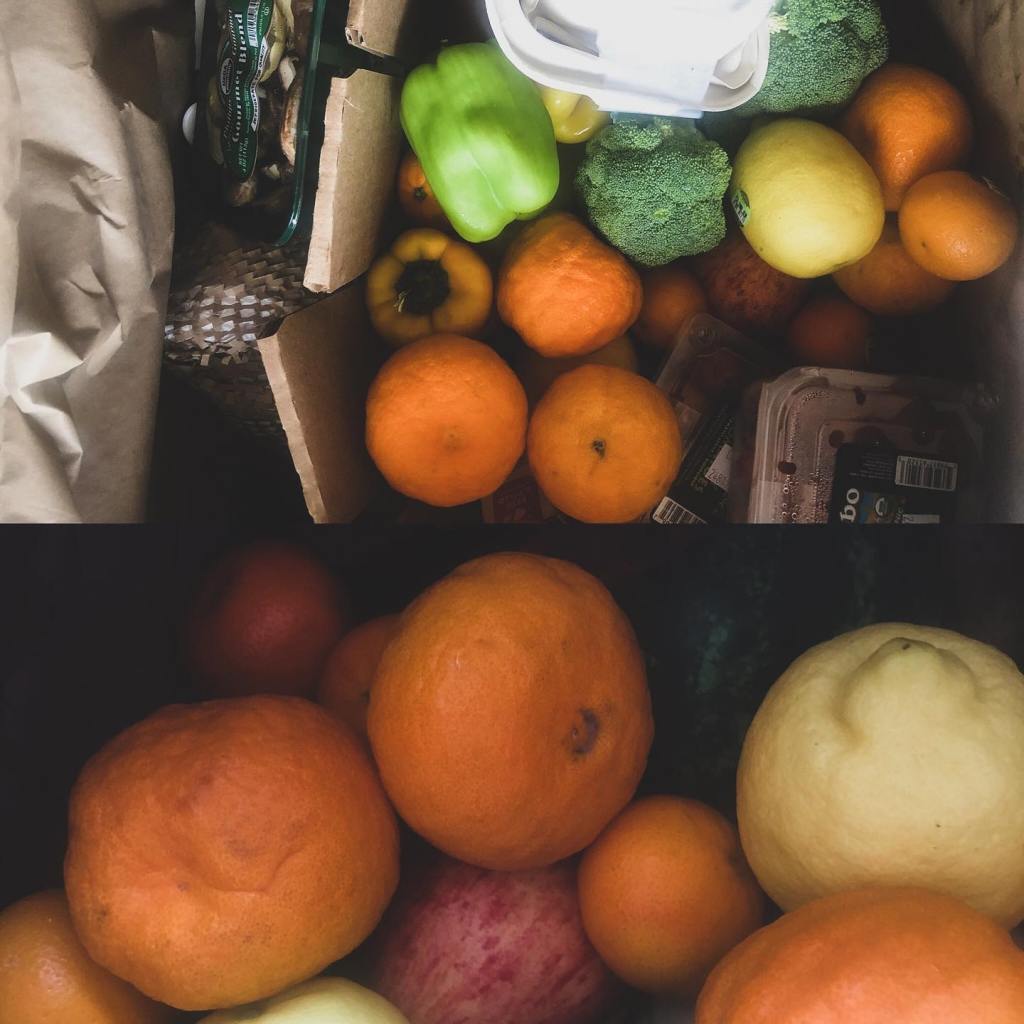I’ve started edging back into sustainability culture now that we’re getting past ‘life or death, face your mortality to buy an orange’.
I’ve been watching some youtube channels for ideas on things like box services, swap outs, what products look like/handle in reality/are actually worth the money. I love the idea of the type of swaps that don’t actually cause an impact on the individual.
I found a channel I really like and one of the videos that got me was one talking about grocery shopping swaps, not so much what to buy but how to buy it. She had a point about bulk buying and the sheer insanity of telling everyone to drag glass jars to the stores for every purchase. Not every one can bring a full flat of canning jars to the grocery store with them, she said. Nor should they have to. Decant into a bag, even your favorite reusable bag, at the store and then rejar into the mason jar at home. This shouldn’t need to be said, she said. And yet here we are.
The thing is, this really did need to be said. This is actually a massive sustainability pet peeve of mine-I love glass. Over 90% of my kitchen is stored in glass and that other 10% is gifted storage like Tupperware. This isn’t a glass rant, it’s an unawareness of the realities of actual mundane existence rant. Glass is heavy, it’s clunky, it’s loud, it breaks. There is a finite amount of storage space to get to the grocery store even if you have your own transportation, you have to drag it around the actual store. You better know the tare of every jar you have. They just get heavier when decanted into. It’s just a horribly awkward set up if you need more than a jar or two.
There are places where glass or at least reusable plastic makes sense-don’t put the chicken into a cloth bag please (I have flashbacks to the ‘meat bag’ when I was a cashier- we had a customer with a dedicated cloth bag for meat transportation. Which is fine. Except it was obviously never washed. Ever.) There is no reason that you can’t put your oatmeal in a bag and deal with jars when you get home.

Except.
This comes to the concept of sustainability, excuses and the idea of the impossible task. The idea of the impossible task comes from the neurodivergent community- it’s the task that’s one thing too far and it will just not get done. It doesn’t matter that for anyone else, the task looks simplistic to the point where you’re just ‘lazy’. The thing will not get done, period, and you need an adaptation at best to work around it.
For some people it’s dishes. Some people it’s brushing their teeth. Some people it’s taking the garbage out. It changes from person to person and in some cases from day to day. It’s a complex balance of forces like exhaustion, executive dysfunction, overstimulation, and burn out.
If sustainability intends on being an inclusive enough movement to actually be useful to a range of people it needs to come to terms with neurodivergent needs like the impossible task. If a person literally cannot get the oatmeal out of the bag into a jar before it attracts pests, we need to figure out a work around to that impossible task. What does that look like? Is it oats in reusable packaging? Is it shopping bags that close tightly enough with a tight enough weave to go straight into a storage piece? Is it working on the carbon foot print of non bulk oat packaging? Honestly the answer is probably all of the above.
We need to stop framing these discussions around the idea of excuse. One of the videos on this channel was talking about paper plates and felt the need to point out that buying paper plates has a higher budget hit than using a regular ceramic plate (no shit). It also implied you just need to get over your ‘excuses’ around stuff like dishwashing. This video made me realize that movement access has to include the concept of mental health and neurodifference/neurodiversity if it’s going to actually be impactful-and it means we need to drop words like excuse from the language. The community does not use paper thinking it’s cheaper. And it’s not a matter of not wanting to bother washing a plate. Or rather, the neuronormative end of the community needs to shut up and listen to why depression, mental health advocates, and the ND community are saying that it’s not just a matter of ‘why can’t you wash a single dish’ (who the hell is only generating a single dish a day anyway. Especially when you’re pushing scratch cooking in tandem with the rest of the movement).
It’s the straw argument all over again- we are telling you what the barriers to access are, and you’re basically going, um no, you just can’t be bothered. I mean I’m busy and I work and I still manage to get this done. Good for you I guess? It was narrow minded pre pandemic and I think the issues and awareness around access and need that Covid has created has just intensified that divide, not weakened it. If you want to make the movement work for as many people as possible we need to drop the mentality that it’s walking into a co op with a fleet of mason jars, never touching plastic ever again with your sanctified hands.





